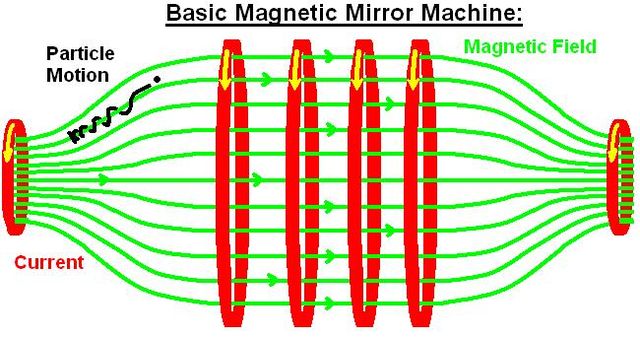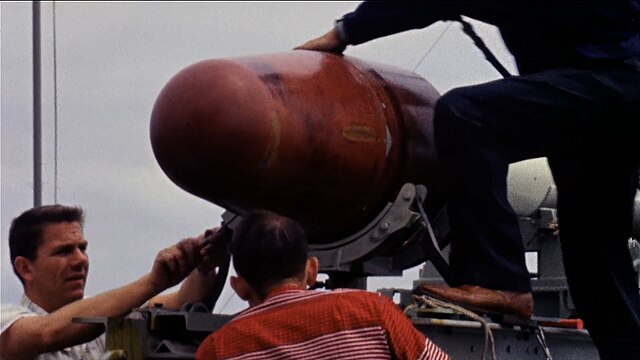Operation Argus was a series of United States low-yield, high-altitude nuclear weapons tests and missile tests secretly conducted from 27 August to 9 September 1958 over the South Atlantic Ocean. The tests were performed by the Defense Nuclear Agency.
Path of TF-88 during August and September 1958.
Deployment of X-17A aboard USS-Norton Sound.
X-17A warhead.
X-17A awaiting launch aboard USS-Norton Sound.
The Christofilos effect, sometimes known as the Argus effect, refers to the entrapment of electrons from nuclear weapons in the Earth's magnetic field. It was first predicted in 1957 by Nicholas Christofilos, who suggested the effect had defensive potential in a nuclear war, with so many beta particles becoming trapped that warheads flying through the region would experience huge electrical currents that would destroy their trigger electronics. The concept that a few friendly warheads could disrupt an enemy attack was so promising that a series of new nuclear tests was rushed into the US schedule before a testing moratorium came into effect in late 1958. These tests demonstrated that the effect was not nearly as strong as predicted, and not enough to damage a warhead. However, the effect is strong enough to be used to black out radar systems and disable satellites.

Charged particles (black) naturally orbit around the lines of a magnetic field (green lines). In the mirror, the strong field at the ends causes the particles to slow and then reverse their motion along the lines.





